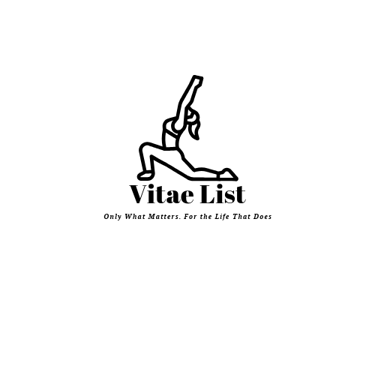The Best Footwear for Strength Training: Barefoot, Cross-Trainers, or Lifters?
Choosing the right footwear for strength training can make or break your performance. This guide from Vitae List compares barefoot shoes, cross-trainers, and lifting shoes — explaining how each supports balance, form, and stability. Learn which type fits your training goals so you can lift stronger, safer, and with more control.
FITNESS GEAR
Vitae List
10/12/20253 min read


The Best Footwear for Strength Training: Barefoot, Cross-Trainers, or Lifters?
Disclosure: Vitae List is a participant in the Amazon Services LLC Associates Program, an affiliate advertising program designed to provide a means for sites to earn fees by linking to Amazon.com and affiliated sites. As an Amazon Associate, we earn from qualifying purchases at no extra cost to you.
When it comes to strength training, your footwear is more than a fashion choice — it’s your foundation. The shoes you wear directly affect how you move, balance, and generate force. A stable base means better form and safer, stronger lifts. But with so many styles available — from barefoot shoes to cross-trainers to weightlifting shoes — how do you know which is right for you?
Let’s break it down by training style, movement type, and individual goals.
1. Barefoot Shoes: The Minimalist Approach
Barefoot-style shoes have exploded in popularity for one key reason: they help you reconnect with your natural movement. By removing thick cushioning and arch support, these shoes let your feet engage more muscles for balance and stability.
Benefits:
Enhances foot and ankle strength
Improves ground contact and balance
Promotes better lifting posture by keeping your feet flat and stable
Great for deadlifts, bodyweight training, and functional fitness
Best for:
Athletes focusing on natural movement or functional strength
Deadlifters who want maximum floor contact and stability
Home gym users training on solid, non-slippery floors
Potential drawbacks:
Not ideal for high-impact movements or heavy Olympic lifts
Takes time to adapt — weak arches or limited ankle mobility can cause strain
Recommended options:
Brands like Vivobarefoot, Xero Shoes, and WHITIN make excellent barefoot trainers that balance grip, flexibility, and durability. We have used these and we sometimes wear them sometimes we don't. Having tried a few we can definitely recommend Vivobarefoot, they have a great fit and feel of all the versions we have tried on and worked out in.
Vivobarefoot Primus Lite 3.5 Womens Barefoot Shoes - https://amzn.to/3W2aKAw
Vivobarefoot Motus Strength Men's Training Shoe - https://amzn.to/4h3TO66
2. Cross-Trainers: The Versatile All-Around Shoe
If your workouts mix lifting, cardio, and agility work, cross-trainers might be your best bet. These shoes blend support and flexibility — perfect for hybrid athletes who do more than just strength work.
Benefits:
Provides cushioning for dynamic movements (like box jumps or lunges)
Offers stability for moderate lifting
Breathable and comfortable for long sessions
Works well for circuit training or functional fitness routines
Best for:
Lifters who mix strength and conditioning
CrossFit-style workouts
Gym-goers who do machine work and free weights in one session
Potential drawbacks:
Slightly elevated heels or soft soles can reduce stability under max loads
Not ideal for heavy barbell work like squats or deadlifts
Recommended options:
Nike Metcon, Reebok Nano, and Under Armour Project Rock Blood Sweat series are all top choices for versatile, performance-driven training shoes. We always prefer on the day-to-day to use a cross trainer. They are always comfortable and they are up to the task in multiple fronts from lifting to cardio to CrossFit. We love:
Under Armour Men's Project Rock Blood Sweat Respect 4 Sneaker - https://amzn.to/4nQUK0u
For the Ladies: Under Armour Women's Infinite Sneaker - https://amzn.to/4nHloZz
3. Weightlifting Shoes: The Precision Tool
For those training seriously in Olympic lifting or powerlifting, dedicated weightlifting shoes are game-changers. With their firm soles and elevated heels, these shoes help you maintain better posture and drive power efficiently through your legs.
Benefits:
The raised heel improves squat depth and form
Solid, incompressible soles enhance stability and power transfer
Ideal for clean & jerk, snatch, and front squat variations
Promotes upright torso alignment during heavy compound lifts
Best for:
Powerlifters and Olympic lifters
Athletes focusing on barbell strength progression
Those with limited ankle mobility needing extra heel lift
Potential drawbacks:
Not suitable for running or agility work
Can feel rigid for general gym use
Usually higher priced than general trainers
Recommended options:
Adidas Adipower, Nike Romaleos, and Reebok Legacy Lifter are standout choices for competitive and recreational lifters alike. For the die hard lifter these are a must. We love the look fit and feel of the Adipower lifting shoe, it has adaptability and looks great on your feet. So many lifting shoes are terribly ugly and only focus on function but these meet aesthetic and blend in form and function.
adidas Unisex-Adult Adipower Weightlifting 3 Shoes Cross Trainer - https://amzn.to/48W0otu
4. Don’t Forget: Technique Comes First
No shoe can replace good form. While the right footwear supports your training, real strength comes from consistent movement quality, proper progression, and smart recovery. If you’re just starting, test different options to see what helps you feel most stable and confident under load.
And remember — your training environment matters too. If you lift at home, flooring, grip, and surface type will all influence which shoe feels best.
Final Thoughts
Your feet are your foundation. Choosing the right shoe for your strength training style means better performance, fewer injuries, and more efficient progress over time.
If you’re serious about your lifting, consider investing in two pairs — one minimalist or cross-trainer for general work, and one dedicated lifting shoe for heavy sessions.
Train grounded, train smart, and stay consistent — your results will follow.
